The Amazon Rainforest, often dubbed the "lungs of the Earth," is gasping for air. Every minute, an area equivalent to 10 soccer fields vanishes, deforested by illegal loggers, agricultural expansion, and rampant development. The stakes are high, and the clock is ticking.
Now, imagine a fleet of autonomous drones zipping through the Amazon’s dense canopy, mapping deforestation in real-time or detecting illegal logging activities before they escalate. Picture robotic systems planting thousands of seedlings in deforested areas, restoring biodiversity at an unprecedented scale. This is the promise of the Robo-Ecologist—a fusion of cutting-edge technology and ecological science that could revolutionize how we protect our planet’s most vital ecosystems.
But can machines truly save the Amazon? Where do they excel, and where do they fall short? And what happens to the human element of conservation when robots take over? In this article, we dive deep into the rise of the Robo-Ecologist, exploring its potential, challenges, and the ethical dilemmas it brings to the table.
---
### **Snippet**
Can AI-powered drones and robots save the Amazon Rainforest? This article explores how cutting-edge technology—from autonomous drones to machine learning algorithms—could monitor, restore, and protect the Amazon’s vital ecosystems. Discover how the Robo-Ecologist might be the key to combating deforestation, wildfires, and biodiversity loss in one of the world’s most critical habitats.
---
### **The State of the Amazon: A Crisis Unfolding**
The Amazon Rainforest is often called the “lungs of the Earth,” but it’s gasping for breath. Every minute, an area equivalent to 10 soccer fields is lost to deforestation, driven by illegal logging, agricultural expansion, and infrastructure development. This destruction threatens not only the rainforest’s incredible biodiversity—home to 10% of the world’s known species—but also its role in global carbon sequestration. The forests are home to one in ten known species on Earth and play a critical role in global carbon sequestration. The destruction of these forests peaks global climate than ever before.
The current conservation efforts, while valiant, are strained due to the harsh realities of manual monitoring, deforestation that occurs at an alarming pace, and labor-intensive reforestation efforts that are simply to scale. These traditional methods are not only slow but protected areas and enforcement but are often too, too, difficult against the scale of destruction.
---
### The Rise of the Robo-Ecologist
The time has arrived in ecosystems will know: photo of wall of the Earth and robotics to combat this destruction.
The landscaper demands fair.
The stakes never as high as and fal what Rob Ecologist pursuits may be protecting the Amazon.
---
### Conclusion
So, the Rob Ec--our Amaz. Human challenge exceeds, and biases, and ethical dilemmas come fore. The breach, can we reagente?
We invite you to subscribe for our blog. Become a resident of the "Shining City on the Web" (link that text in quotation marks to https://www.inthacity.com/blog/newsletter/) and engage in the debate surrounding the future of conservation in our rainforests.
Ask us anything! Let us know your thoughts in the comment section below!
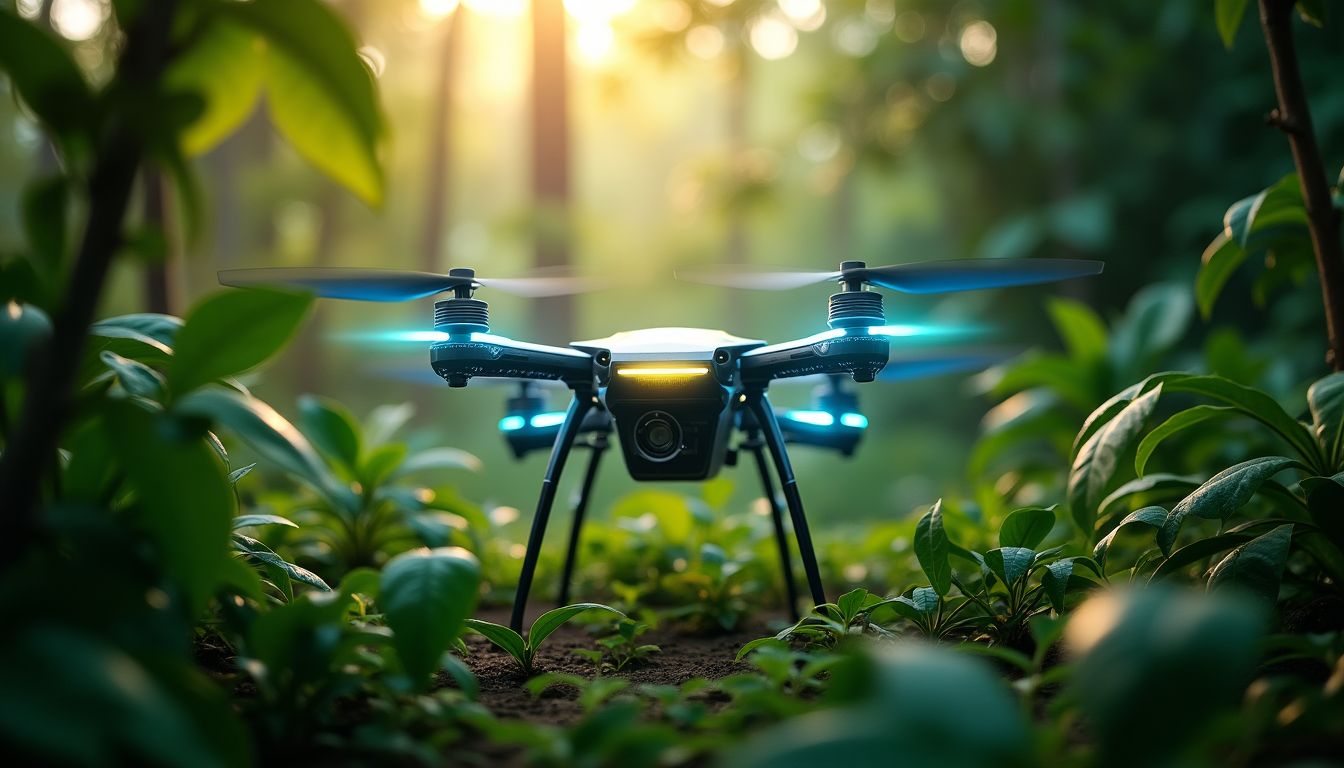
2. The Rise of the Robo-Ecologist
2.1 What is a Robo-Ecologist?
Imagine a superhero for the Amazon Rainforest. But instead of a cape, it’s got propellers, sensors, and a knack for crunching numbers. That’s the Robo-Ecologist: a mash-up of AI, robotics, and ecology designed to monitor, restore, and protect ecosystems. These tech-savvy guardians are equipped to do everything from spotting illegal loggers to planting trees faster than you can say "photosynthesis."
2.2 Key Technologies
So, what’s under the hood of this mechanical eco-warrior? Let’s break it down:
- AI Drones: These flying marvels come armed with high-res cameras, LiDAR, and thermal sensors. They can scan vast swaths of the Amazon, spotting everything from illegal logging camps to wildfires before they spiral out of control. Think of them as the rainforest’s eyes in the sky.
- Robotic Planters: These machines are like Johnny Appleseed on steroids. Capable of planting thousands of seedlings in a single day, they navigate tough terrain with ease, ensuring deforested areas get a green makeover faster than a TikTok trend.
- Machine Learning Algorithms: AI isn’t just about flying robots and planting trees. It’s also about analyzing heaps of data to predict threats like wildfires or illegal activities. These algorithms are the brains behind the operation, crunching numbers faster than a caffeinated accountant.
2.3 Global Precedents
This isn’t just a pipe dream. AI and robotics are already making waves in conservation worldwide. For example, BioCarbon Engineering has been using drones to plant trees in Myanmar, while Rainforest Connection deploys AI-powered acoustic sensors to detect illegal logging in real-time. Even in Africa, AI is being used to track poachers. The Robo-Ecologist isn’t just coming—it’s already here.
3. Challenges of Deploying AI in the Amazon
3.1 Technical Hurdles
Let’s face it: the Amazon isn’t exactly the easiest place to work. Dense vegetation, remote locations, and unpredictable weather make it a tech nightmare. Drones can get tangled in trees, robotic planters can get stuck in mud, and sensors can malfunction in the humidity. It’s like trying to run a marathon in flip-flops—doable, but not ideal.
3.2 Ethical Concerns
Then there’s the ethical side of things. Relying too much on machines could mean fewer jobs for local communities who’ve been protecting the rainforest for generations. Plus, there’s the creepy factor. Do we really want drones spying on every corner of the jungle? It’s like the plot of a sci-fi movie where the robots take over—except instead of ruling the world, they’re just planting trees.
3.3 Cost and Scalability
Let’s talk money. Developing and deploying these technologies isn’t cheap. High-tech drones, robotic planters, and AI algorithms require serious cash. And scaling up to cover the entire Amazon? That’s like asking for the moon—and maybe a few stars to go with it.
3.4 Data Accuracy
Finally, there’s the issue of getting it right. AI is only as good as the data it’s trained on. If the algorithms misinterpret what they’re seeing, we could end up with false alarms or missed threats. Imagine a drone mistaking a harmless bush for an illegal logging camp—cue the facepalm.
4. Potential Benefits of AI in Conservation
While challenges exist, the potential benefits of using AI and robotics in the Amazon are nothing short of transformative. Imagine a world where machines work tirelessly to protect and restore one of Earth’s most vital ecosystems. Here’s how the Robo-Ecologist could make a difference:
4.1 Real-Time Monitoring
One of the most immediate benefits of AI-powered drones is their ability to monitor the Amazon in real-time. Unlike human patrollers, drones can cover vast areas quickly and detect illegal activities like logging or mining before they escalate. For example, Rainforest Connection uses AI-powered acoustic sensors to detect the sounds of chainsaws and alert authorities instantly. This kind of rapid response could save countless acres of forest.
4.2 Efficient Reforestation
Reforestation is critical to reversing the damage caused by deforestation, but it’s a slow and labor-intensive process. Enter robotic planters. Companies like BioCarbon Engineering have developed drones that can plant seeds at a rate of 120 per minute. These machines can navigate difficult terrain and plant native species with precision, making reforestation faster and more effective.
4.3 Predictive Analytics
AI’s ability to analyze vast amounts of data makes it a powerful tool for predicting environmental threats. Machine learning algorithms can sift through satellite imagery, weather data, and historical patterns to forecast wildfires, droughts, or disease outbreaks. This predictive capability allows conservationists to take proactive measures, such as controlled burns or early evacuation plans, to mitigate risks.
4.4 Biodiversity Restoration
The Amazon is home to an incredible array of species, many of which are endangered. AI can help identify key habitats and species that need protection. For instance, tools like Wildlife Insights use AI to analyze camera trap data, providing insights into animal populations and behaviors. This information can guide targeted conservation efforts, ensuring that biodiversity is preserved for future generations.
5. Case Studies: AI in Action
The concept of the Robo-Ecologist isn’t just theoretical—it’s already being implemented in various conservation projects around the world. Here are some real-world examples of how AI and robotics are making a difference:
5.1 Rainforest Connection
Rainforest Connection is a non-profit organization that uses AI-powered acoustic sensors to detect illegal logging in real-time. These sensors, placed high in the forest canopy, can hear the sounds of chainsaws and alert local authorities. This technology has been deployed in several countries, including Peru and Brazil, and has significantly reduced illegal logging activities.
5.2 BioCarbon Engineering
BioCarbon Engineering has developed drones that can plant trees at an astonishing rate. In Myanmar, these drones have been used to reforest areas devastated by deforestation and agriculture. The drones not only plant seeds but also map the terrain to ensure optimal growing conditions, making reforestation faster and more efficient.
5.3 Wildlife Insights
Wildlife Insights is a platform that uses AI to analyze data from camera traps. This tool helps conservationists track animal populations, identify endangered species, and monitor habitat health. By automating the analysis process, Wildlife Insights has made biodiversity monitoring more accessible and less time-consuming.
5.4 Amazon Watch
Amazon Watch uses satellite imagery and machine learning to track deforestation in the Amazon. By analyzing changes in land cover, the organization can identify illegal logging activities and hold corporations accountable. This data-driven approach has been instrumental in raising awareness and driving policy changes.
6. AI Solutions: How Would AI Tackle This Issue?
To truly save the Amazon Rainforest, we need a multi-step, AI-driven strategy that combines cutting-edge technology with human expertise. Here’s how AI could tackle the crisis:
6.1 Step 1: Data Collection
First, we need to map the Amazon in unprecedented detail. Deploy AI drones equipped with high-resolution cameras, LiDAR, and thermal sensors to capture real-time data on vegetation, wildlife, and human activities. Companies like DJI already manufacture drones capable of this task. Complement this with satellite imagery from providers like Planet Labs for broader coverage. This data will form the foundation for all subsequent AI analysis and decision-making.
6.2 Step 2: Threat Detection
Next, train machine learning models to identify threats like illegal logging, wildfires, and land use changes. Projects like Rainforest Connection have already demonstrated the power of AI-powered acoustic sensors to detect chainsaws in real-time. Integrate these tools with data from camera traps and satellite imagery to create a comprehensive threat detection system. AI algorithms can then alert authorities and conservationists to act before it’s too late.
6.3 Step 3: Automated Restoration
Reforestation at scale is critical. Develop robotic planters like those by BioCarbon Engineering, which can plant seeds at a rate of 120 per minute. These machines must be capable of navigating difficult terrain and planting native species strategically. Use AI to analyze soil quality and biodiversity needs, ensuring that each seedling has the best chance to thrive. Combine this with bioengineered seeds designed to grow faster and resist environmental stressors.
6.4 Step 4: Predictive Analytics
AI’s predictive capabilities can be a game-changer. Develop algorithms to forecast threats like wildfires, disease outbreaks, or species extinction risks. For instance, AI could analyze weather patterns, vegetation dryness, and historical data to predict wildfire hotspots. This would enable proactive measures, such as controlled burns or early intervention teams. Similarly, AI could identify species at risk of extinction and recommend conservation strategies tailored to their needs.
6.5 Step 5: Community Engagement
Finally, involve local communities in conservation efforts. Develop AI-powered platforms that provide real-time data and actionable insights to indigenous groups, farmers, and local authorities. Initiatives like Amazon Watch show how collaboration with local populations can amplify conservation impact. AI tools can also help educate communities about sustainable practices and provide economic alternatives to deforestation, such as ecotourism or agroforestry.
Action Schedule/Roadmap
Here’s a detailed roadmap to turn this vision into reality:
| Timeline | Action | Key Personnel |
|---|---|---|
| Day 1 | Assemble a team of AI engineers, ecologists, and conservationists. | Project Manager, AI Specialists, Ecologists |
| Week 1 | Secure funding from governments, NGOs, and tech companies like Google.org and Microsoft. | Fundraising Team, Financial Advisors |
| Month 1 | Deploy pilot AI drones for data collection in a small section of the Amazon. | Drone Operators, Data Scientists |
| Month 3 | Train machine learning models using collected data. | Machine Learning Engineers, Ecologists |
| Year 1 | Scale up drone operations to cover 10% of the Amazon. | Logistics Team, Drone Technicians |
| Year 1.5 | Launch robotic planting systems in deforested areas. | Robotics Engineers, Field Technicians |
| Year 2 | Develop predictive analytics tools for wildfire and biodiversity threats. | Data Analysts, AI Developers |
The Robo-Ecologist’s Promise
The Amazon Rainforest is more than just a collection of trees—it’s a living, breathing ecosystem that sustains life on Earth. The Robo-Ecologist offers a glimmer of hope in the face of unprecedented destruction. By combining AI, robotics, and human ingenuity, we can monitor, protect, and restore this vital habitat with precision and efficiency.
But let’s be clear: technology alone cannot save the Amazon. It must work hand-in-hand with local communities, governments, and conservation organizations. The challenges are immense—from the technical hurdles of deploying drones in dense jungles to the ethical concerns of relying on machines for environmental stewardship. Yet, the potential rewards are even greater.
The Robo-Ecologist is not a silver bullet, but it is a powerful tool in our arsenal. It represents a new frontier in conservation—one where innovation meets responsibility, and where the fight for the Amazon becomes a fight for the future of our planet. Will we rise to the occasion? The answer lies in how quickly we can adapt, collaborate, and act.
Frequently Asked Questions
Can AI really replace human conservationists?
No, AI is designed to work alongside human conservationists, not replace them. Think of it as a supercharged tool that enhances their efforts. For example, while AI drones can monitor vast areas of the Amazon, humans are still needed to interpret data, make decisions, and engage with local communities. Organizations like Rainforest Action Network emphasize the importance of human-led strategies in conservation.
How accurate are AI predictions in ecology?
AI predictions are improving rapidly but aren’t perfect yet. The accuracy depends on the quality and quantity of data fed into the algorithms. For instance, tools like Wildlife Insights use AI to analyze camera trap data and identify species with impressive accuracy. However, there’s still room for error, especially in complex ecosystems like the Amazon.
What are the ethical concerns of AI in conservation?
Using AI in conservation raises several ethical questions. Here are a few:
- Job Displacement: Could AI take jobs away from local communities who rely on conservation work?
- Data Privacy: How is the data collected by drones and sensors stored and used?
- Surveillance Misuse: Could this technology be used for purposes other than conservation, like tracking people?
Organizations like Amnesty International are already raising awareness about the potential misuse of AI technologies.
How much does deploying AI in the Amazon cost?
The cost can vary widely depending on the scale of the project. For example, deploying a fleet of drones and setting up AI systems could cost millions of dollars. Companies like BioCarbon Engineering, which uses drones for reforestation, have shown that while the initial investment is high, the long-term benefits can outweigh the costs.
Can this technology be used in other ecosystems?
Absolutely! The same principles can be applied to forests, oceans, and even urban environments. For instance, SilviaTerra uses AI to manage forests in the United States, while The Ocean Cleanup uses advanced technology to tackle plastic pollution in the oceans. The Robo-Ecologist isn’t just for the Amazon—it’s a global solution.
What’s the role of local communities in AI-powered conservation?
Local communities play a crucial role in successful conservation efforts. AI tools can empower them by providing real-time data and insights, but their knowledge and participation are irreplaceable. Organizations like Amazon Watch stress the importance of working with Indigenous communities to ensure that conservation strategies are ethical and effective.
How long will it take to see results from AI in the Amazon?
It depends on the scale of the project and the specific goals. For example, drone-based reforestation efforts can show visible results in a few years, while broader initiatives like biodiversity monitoring might take longer. Pilot projects by Rainforest Connection have demonstrated that even small-scale deployments can make a significant impact in a short time.
Where can I learn more about AI in conservation?
Check out resources from organizations like World Wildlife Fund, The Nature Conservancy, and Conservation International. These groups are at the forefront of integrating AI into conservation strategies.
Wait! There's more...check out our gripping short story that continues the journey: The Whispering Canopy
Disclaimer: This article may contain affiliate links. If you click on these links and make a purchase, we may receive a commission at no additional cost to you. Our recommendations and reviews are always independent and objective, aiming to provide you with the best information and resources.
Get Exclusive Stories, Photos, Art & Offers - Subscribe Today!
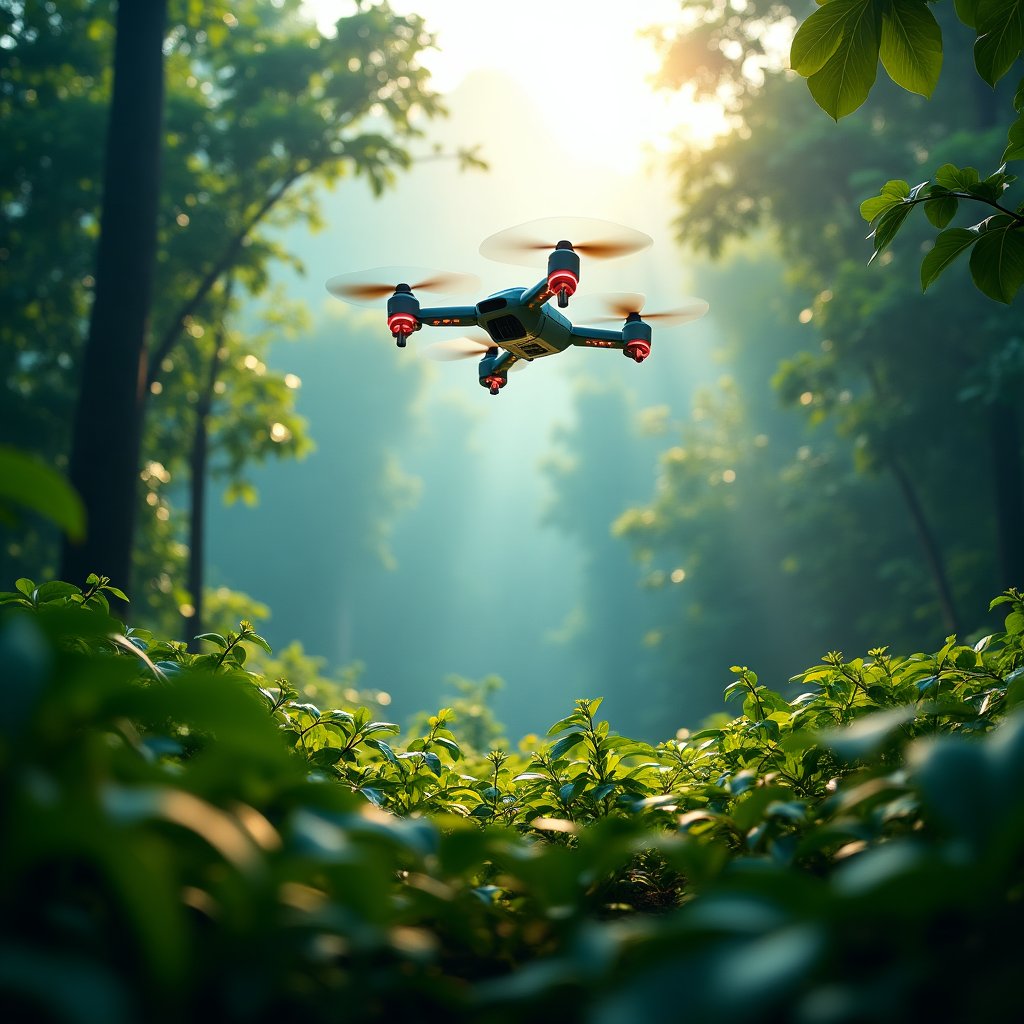
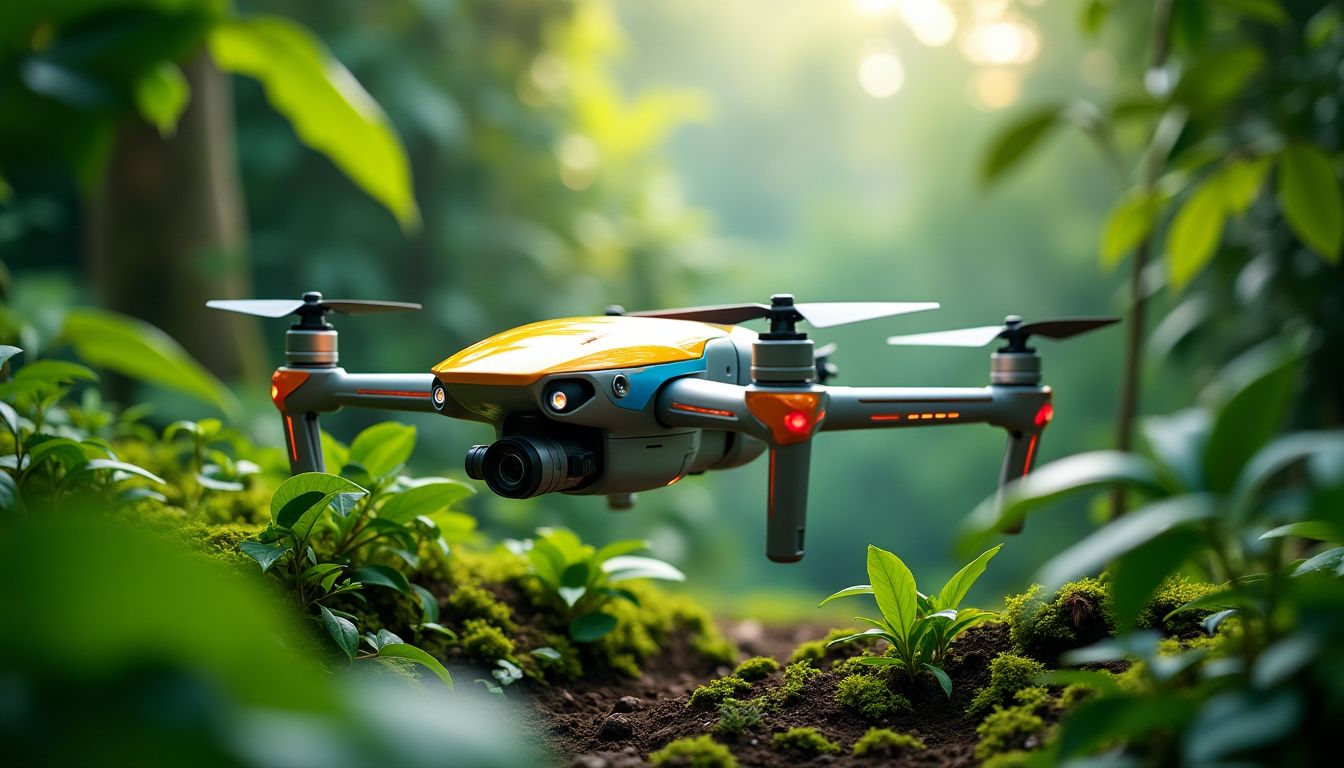
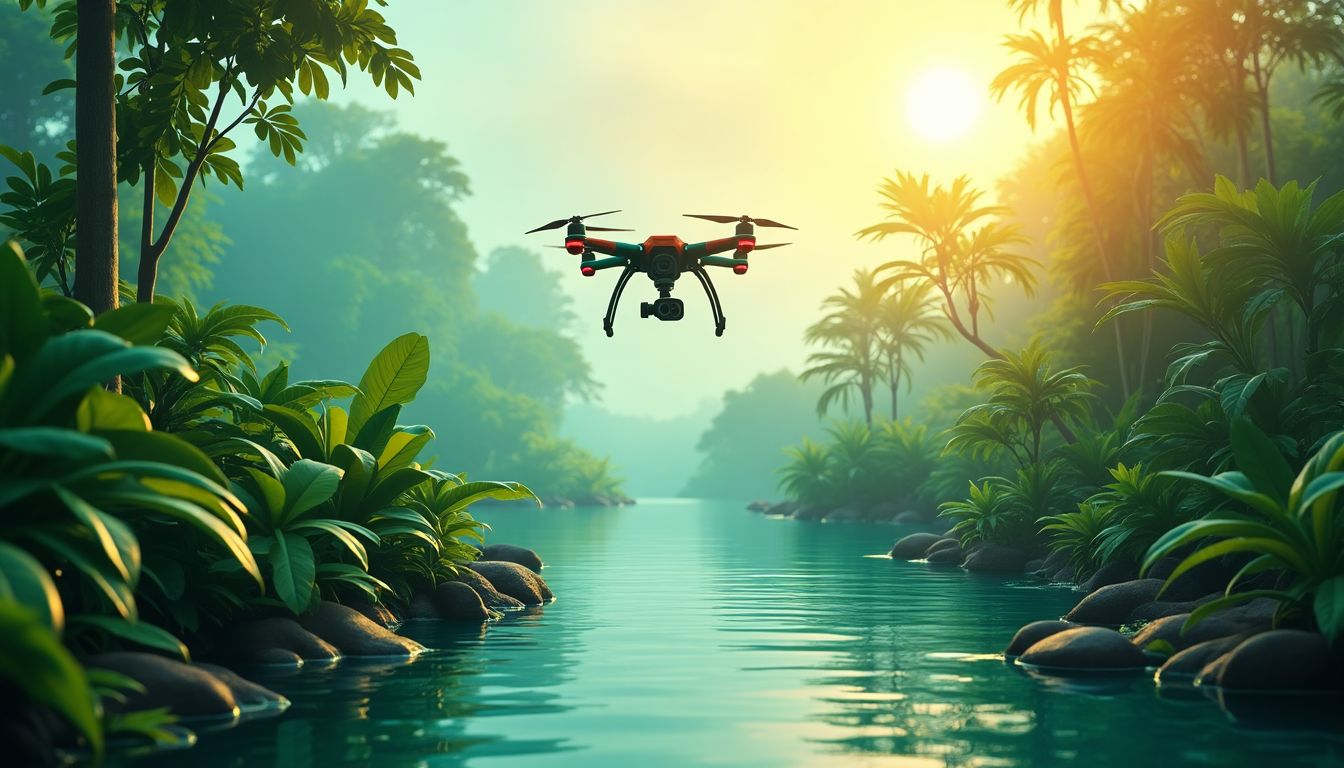
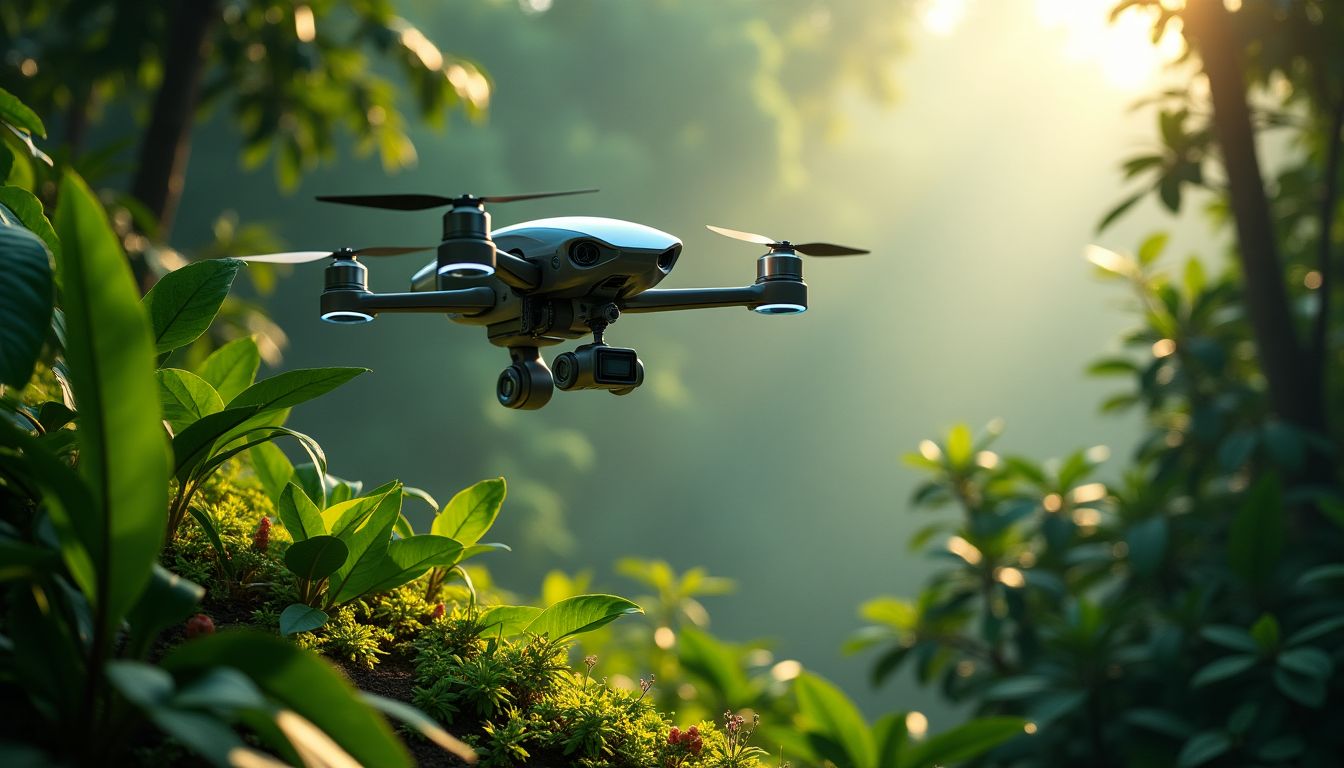
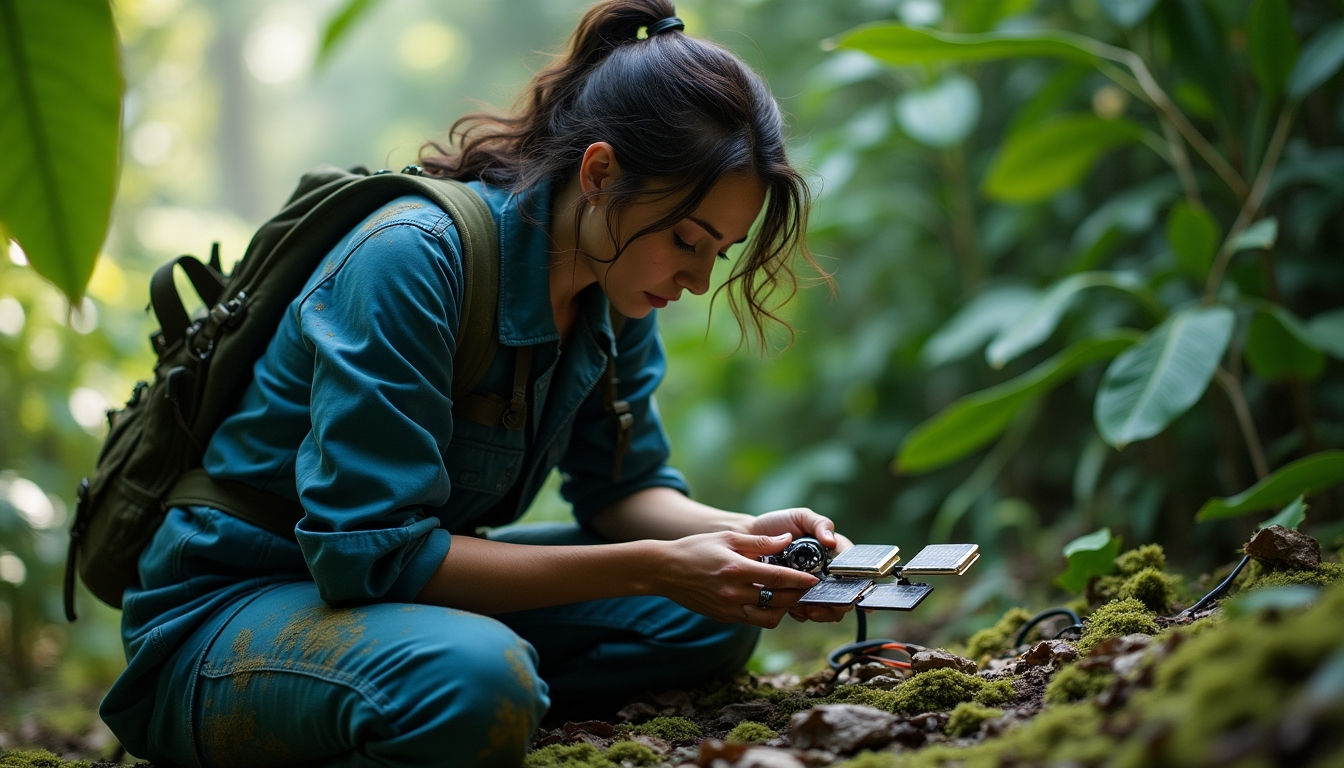
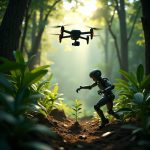






















Post Comment
You must be logged in to post a comment.